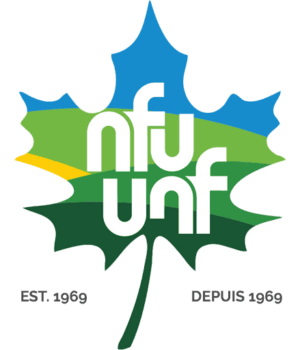SASKATOON, SK.—The NFU has just released the Second Edition of its comprehensive report on greenhouse gas (GHG) emissions from Canadian agriculture and the production of associated farm inputs. That report is available on the NFU website at: https://www.nfu.ca/publications/agricultural-greenhouse-gas-emissions-in-canada-2nd-edition/
Until the NFU’s report, most analyses omitted key GHG sources, lacked adequate detail, spread numbers across several publications and sites, or all three. The NFU has produced a single, accessible report for farmers, policymakers, the media, and others who want to understand the sources of emissions.
This Second Edition updates the First to include recently released emissions data for 2020. The report fills a gap by providing a clear, detailed, comprehensive picture of emissions that can form a foundation for on-farm actions to reduce emissions and for government programs to incentivize and accelerate those actions.
Darrin Qualman, NFU Director of Climate Crisis Policy and Action, noted that the report reveals several things about agricultural GHG emissions, including:
Emissions from Canadian agriculture and the production of associated farm inputs are rising (up 35% since 1990);
The increase is driven by rising rates of nitrogen fertilizer production and use (nitrogen fertilizer tonnage and associated GHG emissions have more than doubled since 1990);
Cattle and their manure are currently the largest source of emissions, though GHGs from cattle are falling as animal numbers fall (emissions from cattle are down 22% from their 2005 peak);
Emissions from fossil fuel use—both on the farm and in the production of farm inputs such as machinery and fertilizers—may make up nearly one-third of total agricultural-related GHGs, so clean renewable energy sources and a rapid move away from fossil fuels are key; and
Although Environment and Climate Change Canada’s (ECCC’s) 2022 National Inventory Report includes revised methodologies for calculating soil carbon sequestration (multiplying sequestration tonnage), emissions remain four times larger than sequestration, so effective reduction in actual emissions must remain the top priority.The NFU is working with nearly two dozen allied organizations in the Farmers for Climate Solutions (FCS) coalition to refine emission-reduction solutions including effective on-farm actions and supportive government policies.
In addition to today’s Second Edition of the NFU report on agricultural emission sources, the NFU has outlined emission-reduction solutions in several reports, including:
Tackling the Farm Crisis and the Climate Crisis: A Transformative Strategy for Canadian Farms and Food Systems, 2019, https://www.nfu.ca/wp-content/uploads/2020/01/Tackling-the-Farm-Crisis-and-the-Climate-Crisis-NFU-2019.pdf
Imagine If…. A Vision of a Near-Zero-Emission Farm and Food System for Canada, 2021, https://www.nfu.ca/wp-content/uploads/2021/03/Imagine-if-NFU-2021-EN-FINAL.pdf







![Kenopic/Smith Auction [Paid Ad]](https://whitewaternews.ca/wp-content/uploads/2018/10/advertising-100x75.jpeg)

